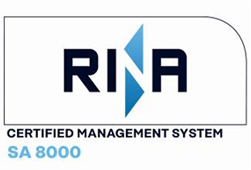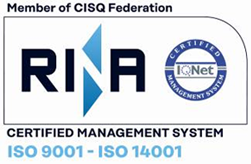
Home | Acting | Magnesium
MAGNESIUM
RIMA is the only primary magnesium producer in the southern hemisphere and the only one in the world producing automotive parts from ore utilizing a highly vertically integrated process. Magnesium is the lightest of the structural metals. Its use brings several advantages such as reducing the weight of an automotive part by up to 30%, compared to aluminum, thus allowing the production of lighter and more efficient vehicles in terms of fuel consumption and atmospheric emissions.
Dolomite, which is the primary raw material used in the production of magnesium and its alloys comes from Rima’s own reserves and is calcined in a rotary kiln. The calcined dolomite is then reduced in a silicon-thermic process under vacuum yielding magnesium crystals, which are then further processed to reach final specifications.
Rima Industrial produces a full line of Magnesium products including pure Magnesium ingots, Magnesium Alloys, Magnesium powder, Magnesium-based mixes and Magnesium Diecasting parts.
Metalic Magnesium
Magnesium is an important alloying element in the aluminum industry, mainly in the production of automotive parts, extruded products and beverage cans. It is also used as a reducing agent in the production of special metals such as zirconium and titanium and is also used in the refractory, welding, pyrothenics and cathodic protection industries, among others.
Magnesium is also used in the ductile iron production to promote the nodularization of graphite and also as an alloying element in the production of magnesium-based ferroalloys.
Magnesium Alloys
Magnesium alloys are used in a variety of foundries, mainly diecasting for the automotive industry. Other applications include making tools, electronic equipment such as computers and mobile phones.
Magnesium for the desulfurization of pig iron.
In a powder form and mixed with other materials, Magnesium is commonly used as a desulfurizer in many metallurgical applications and offers the best performance and cost benefit in the following cases:
1 – Iron requiring low levels of Sulfur, below 0.010%
2 – Limited time for desulfurization in steel making
3 – Heats with low temperatures.
4 – Heats with high initial levels of Sulfur
The most common desulfurizing mixture is pulverized lime and Magnesium powder (below 1 mm in size). The Magnesium content in the mixture varies from 5% to 20% depending on the type of injection equipment and the time available for desulfurization
Desulfurization Equipment
RIMA manufactures and supplies sophisticated injection and co-injection equipment for desulfurization of pig iron. Engineers and trained technicians are available to provide the best available support.
Advantages of RIMA’s Magnesium
Green Magnesium
The IMA (International Magnesium Association) recognized in 2014 RIMA’s Magnesium production process as the most sustainable one in operation in the world (https://www.intlmag.org/general/custom.asp?page=2014_res_award_ima), and such recognition is still valid today. In a new study published by the IMA (IMA Launches New Magnesium LCA Study – 2021), the RIMA process was once again recognized for presenting a low rate of CO2 emission (10.1 kg CO2Eq/kg Mg).
RIMA performed the life cycle analysis and calculation of CO2eq of its process using the “cradle-to-gate” methodology. The study concluded that the emissions from Rima’s magnesium production process are equivalent to 10.1 kg CO2eq/kg of Magnesium produced, or 10.1t CO2eq/t Mg, the lowest CO2eq emission rate among the existing technologies in the world. The methodology used in the study included/evaluated the emissions from the input production stages (quartz, dolomite, charcoal), and also from each stage of the magnesium production process. Other magnesium production technologies have results in the range of 14 to 17.8 kg CO2eq./kg Mg (Electrolytic technology), and 19.9 to 25.8 kg CO2eq./kg Mg (Pidgeon technology), according to the IMA (International Magnesium Association).



Public Abstract Rima Industrial S.A.
PUBLIC ABSTRACT OF THE FOREST MANAGEMENT PLAN – BURITIZEIRO – MG
RIMA certifications
CREDIBILITY AND MARKET RECOGNITION





